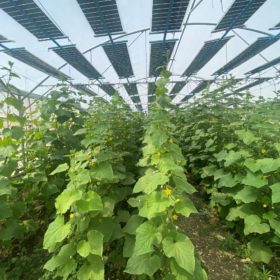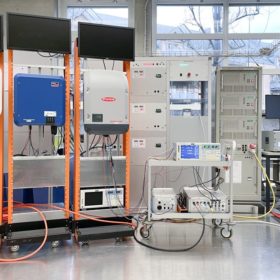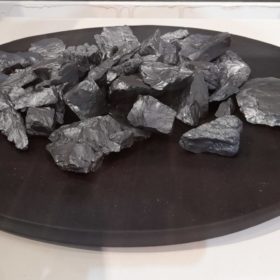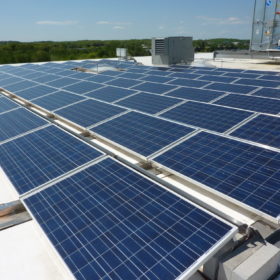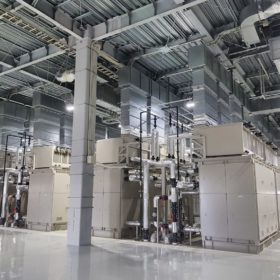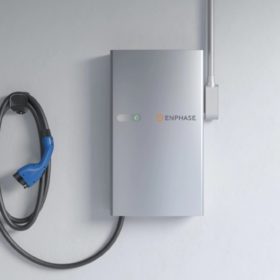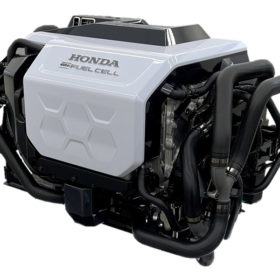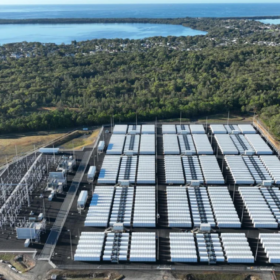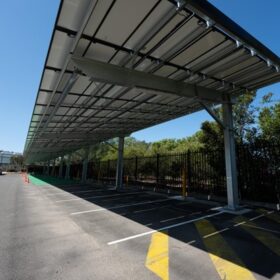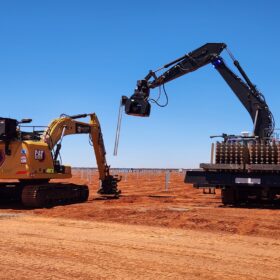Online estimation tool for heat pump sizing
The Australian Alliance for Energy Productivity (A2EP) has released a free, online estimation tool to aid Australian businesses in sizing heat pumps to replace gas boilers. The tool estimates the capex, opex, net savings, and payback time based on inputs about heating, cooling, location, and temperature requirements.
New agrivoltaic project to test crop-responsive PV trackers for greenhouses
An international consortium led by Israel’s Al-Zahrawi Society has launched the Regace project to develop agrivoltaic solutions for greenhouses. It will investigate the performance of a new tracking system across locations and climates and use carbon dioxide enrichment to improve crop yield.
PV-powered seawater desalination for afforestation carbon capture
Finnish researchers have proposed the use of solar, wind, and storage to provide desalinated seawater to restore forests. Their model predicts that an additional 10.7 TW of PV would be needed to actually do this by 2100, leading to a cumulative carbon dioxide sequestration potential of 730 gigatonnes.
Survey shows 34.3% failure rate for residential inverters over 15 years
The Bern University of Applied Sciences in Switzerland has published the initial results of a survey on the durability and performance of residential PV inverters and power optimisers over a 15-year period. They found that more than 65% of the inverters did not present yield-relevant faults by their 15th year of operation.
Polysilicon price rebound continues
Polysilicon prices started to rise in the second half of January, according to new data from the China Nonferrous Metals Industry Association (CNMIA).
Globally esteemed engineering award given to Australian research team
The prestigious Queen Elizabeth Prize for Engineering has this year been awarded to the University of New South Wales’ Professor Martin Green, Dr Aihua Wang and Dr Jianhua Zhao, as well as the Australian National University’s Professor Andrew Blakers, for their research work and development of PERC solar technology.
AC vs. DC in residential buildings equipped with solar-plus-storage
Scientists in Sweden have compared AC and DC topologies in PV-powered buildings using battery storage. They have found that DC distribution systems can achieve energy savings when they are combined with solar-plus-storage systems.
Overcoming thermal issues of vanadium redox flow batteries
Chinese scientists have analysed reports of thermal issues with vanadium redox flow batteries (VRFB) and existing thermal management methods. They say the operating temperature should be maintained in the range of 10 C to 40 C to ensure VRFBs with high efficiency, weak side reactions, high electrolyte stability, and low crossover.
Enphase demonstrates bidirectional EV charger
Enphase’s new bidirectional EV charger enables vehicle-to-home and vehicle-to-grid applications, and can be integrated with its home energy systems.
Honda reveals plans to halve fuel cell costs by 2030
Honda has revealed a new hydrogen strategy, while Air Liquide and TotalEnergies have announced a new hydrogen joint venture.

